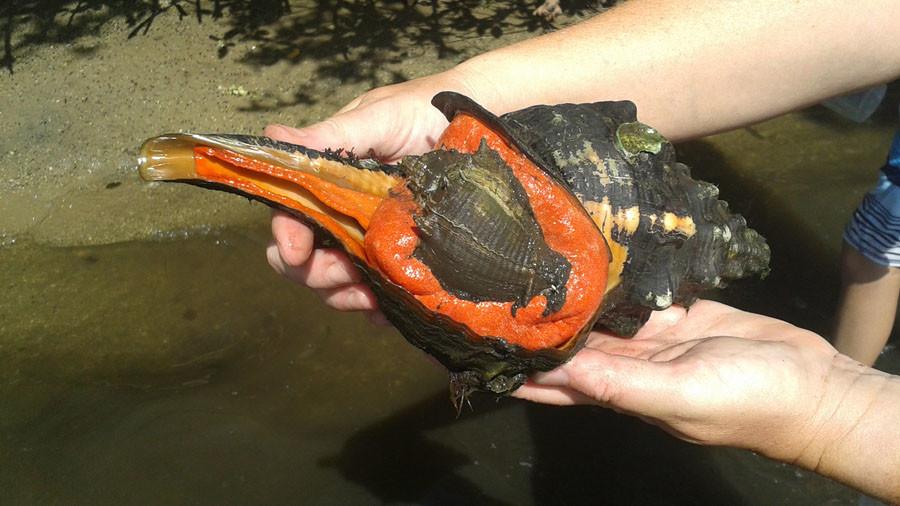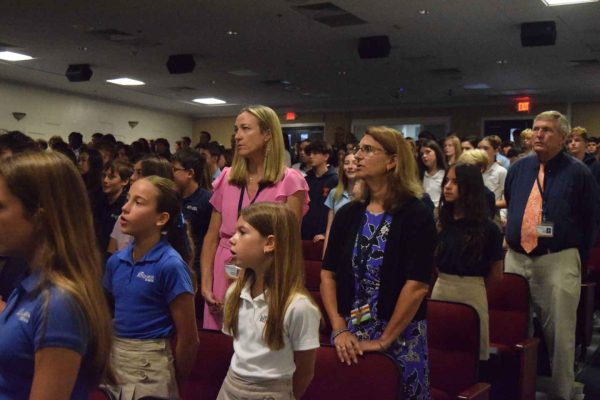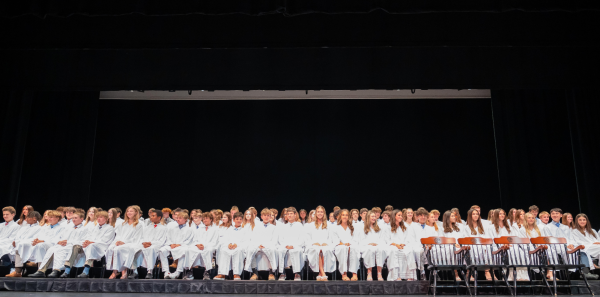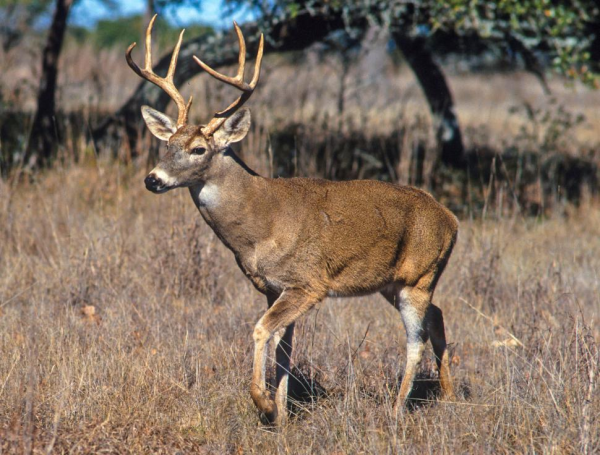Seventh Graders Get Education along with Service Hours during MacArthur Park Visit
One of the park employees holds the horse conch which is ingesting the smaller queen conch. The specimen was found in the estuary during Benjamin’s visit to the park on May 11, 2015.
On May 11, the seventh-grade students departed for John D. MacArthur Beach State Park for their annual community service field trip. Established in 1989, MacArthur Park contains more than 438 acres of natural environment including seven species of plants and twenty-two species of animals designated as endangered or threatened.
MacArthur Park is relatively close to The Benjamin School, so the students were able to arrive early and participate in many activities such as seine netting (using a large net to dredge for brackish wildlife in the estuary), a beach cleanup, and learning about native plants and animals. These activities were led by Veronica Frehm, the park’s director of education, along with some of the other park employees and their corps of friendly volunteers.
In order to ensure that all the students were able to experience all of the different activities, they were split up into two groups – blue and pink. The names of these groups reflected some of the native species of wildlife found in Florida, i.e. blue groupers, blue mangroves, pink fire coral, and pink loggerheads. The beach cleanup for the blue group took place in the morning while the beach cleanup for the pink group occurred after lunch. “I really liked the beach cleanup because I felt I was being useful and helping out the environment,” said middle school Spanish teacher Diana. Rios, who also chaperoned the trip. “I was angry to see all the pieces of plastic on the beach. I feel the people should be more educated to realize the damage they’re doing. I am glad I was able to help out,” she added.
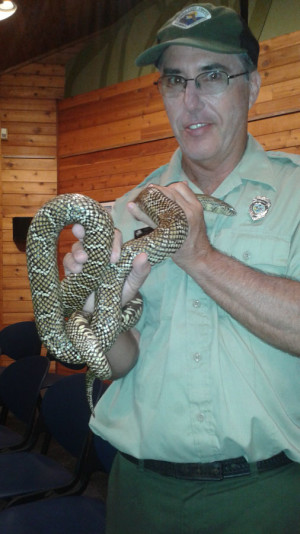
One of the park employees holds “King Henry,” the king snake that lives at the park’s education center.
For the beach cleanup, the staff organized a contest for the students to see which group could collect the most garbage. The winner was the pink fire coral with 16 pounds of trash. Overall the students collected more than 30 pounds of garbage found on the beach. While walking along the beach, the students noticed several areas that were demarcated with stakes and plastic boundaries indicating that those areas were turtle nesting sites and should not be disturbed. It’s currently turtle nesting season in Florida, and the park staff tries to give turtle hatchlings every possible chance to survive and make it to the ocean. According to the park staff, only 1 in 1,000 hatchlings survive as a result of predators.
Along with the beach cleanup, the students were able to get down and dirty as they waded into the park’s estuary for seine netting. The purpose of seine netting is for the students to briefly catch a number of different organisms on the net so that they may be observed by the students. A seine net is a net that must be handled by two people stretched across a certain area to capture organisms. Some of the animals the students caught in the nets were comb jellyfish, sponges, various types of fish, and even a pregnant male seahorse! One of the groups also found a large horse conch, about eight inches long, consuming a smaller queen conch via its bright orange foot! “My favorite part was catching the animals [in the seine nets] because I wasbe able to see all the different organisms the estuary has,” said seventh grader Hunter Graue.
To cap off the day, the students were brought to the education center where they learned about the egg-laying habits of local turtles and some of Florida’s snakes. During the “snake talk,”, the Benjamin students learned about King Henry, a king snake that has been with the MacArthur staff for more than eleven years. They learned that king snakes get their name from the fact that they eat other snakes, even venomous ones since they are immune to venom. In addition, for the first time ever, the MacArthur staff let students view a loggerhead turtle being weighed, measured, and cleaned.
So it was not only a day of service for the seventh graders, but a day of learning more about the park and Florida’s vast wildlife. Both the rangers and volunteers were very friendly and helpful, and made the experience a rewarding one for all involved.
